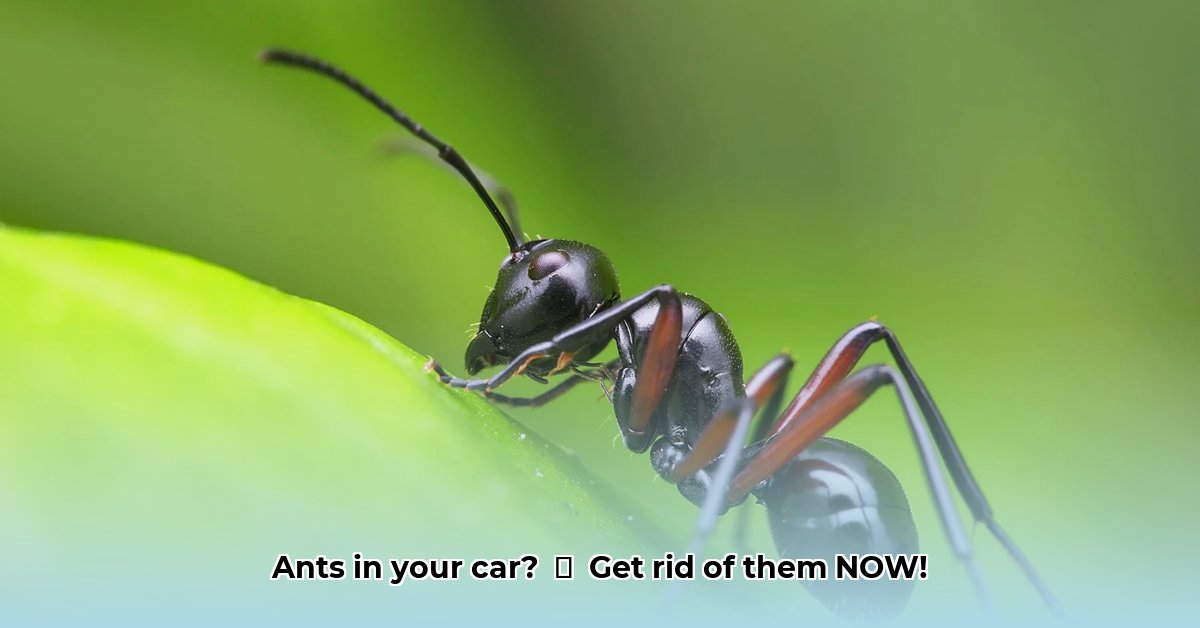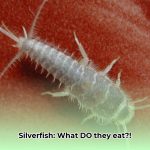Discovering ants in your car is a common yet irritating situation. This comprehensive guide provides you with a strategic, step-by-step method to eliminate these unwelcome guests, offering both do-it-yourself (DIY) techniques and guidance on when to seek professional pest control services. Learn about ant behavior, efficient cleaning methods, safe and strategic bait placement, and proactive prevention strategies to maintain an ant-free vehicle.
Understanding Why Ants Invade Cars
Ants primarily enter vehicles in search of sustenance. Crumbs left from snacks, sugary drink spills, and even discarded food wrappers function as powerful attractants. Ants possess a remarkable ability to follow pheromone trails, meaning that even a minor spill can potentially escalate into a significant infestation. Different species exhibit preferences for different types of food; for instance, odorous house ants are drawn to sweet substances, while carpenter ants may be attracted to moisture and wood fibers within your car’s structure.
Essential Points to Consider:
- Food remnants are the primary instigators for ant invasions in cars.
- Ants utilize pheromone trails to precisely locate food sources.
- Different ant species display varying dietary preferences, influencing their attraction to specific food types.
Identifying an Ant Infestation: Recognizing the Signs
Promptly recognizing the telltale signs of an ant infestation is vital for immediate action. Be vigilant for:
- Visible Ant Trails: Noticeable lines of ants consistently moving toward a particular location within your car, usually from an entry point to a food source.
- Ant Activity Around Food & Drinks: Ants congregating around spilled food or drinks, indicating an active feeding site.
- Nests or Colonies: Observing ants establishing nests within the car’s interior, commonly found in hidden areas such as upholstery seams, under floor mats, or within crevices in the dashboard.
- Presence of Ant Droppings: Identifying small, black specks or granular debris, often indicative of ant waste and nesting activity.
- Unusual Ant Behavior: Witnessing increased ant activity, especially during specific times of the day or under certain weather conditions. This can help you to understand their patterns and sources of entry.
The earlier you detect an ant problem, the simpler and more manageable the eradication process will be.
DIY Solutions: A Detailed Guide to Ant Removal
For early-stage ant problems, these DIY solutions can deliver highly effective results.
Step 1: Meticulously Clean Your Car’s Interior
A thorough cleaning is paramount. Utilize a high-powered vacuum cleaner to meticulously clean every square inch of your car’s interior, with focus on areas prone to crumb accumulation and spills:
- Carefully vacuum underneath the seats, ensuring you reach into corners and tight spaces.
- Thoroughly clean the crevices of the dashboard and door panels, using attachments to extract crumbs and debris.
- Lift and vacuum underneath floor mats, paying attention to edges and corners where crumbs may collect.
- Inspect and clean the glove compartment and center console, removing any forgotten food items or wrappers.
After vacuuming, meticulously wipe down all surfaces with a solution of warm water and dish soap to eliminate food residue and disrupt pheromone trails. Additionally, consider using specialized automotive cleaning products for upholstery and interior surfaces to further eliminate potential attractants.
Step 2: Strategically Deploy Ant Baits
Ant baits serve as a potent tool for ant control. These contain a slow-acting insecticide combined with a sweet or protein-rich attractant. Worker ants transport the bait back to the colony, effectively poisoning the entire nest.
- Strategic Placement is Paramount: Position bait stations outside your car, near potential entry points such as tires, door seams, and window seals, to encourage ants to carry the bait back to their colony. Avoid placing bait directly inside the car, as this may attract more ants initially. If you must place bait inside, conceal it under seats or in areas where children and pets cannot readily access it.
- Select Appropriate Bait Types: Choose ant baits based on the suspected ant species and their food preferences. Sweet baits are effective for sugar-loving ants, while protein-based baits target ants seeking protein sources.
- Maintain Bait Freshness: Regularly inspect ant baits and replace them as needed to ensure their effectiveness. Follow the manufacturer’s instructions for proper bait replacement intervals.
Step 3: Employ Natural Repellents (As Supporting Measures)
While natural repellents by themselves may not eliminate large ant infestations, they can act as valuable support alongside cleaning and baiting strategies.
Effective natural repellents include:
- Vinegar Solution: Spray a mixture of equal parts white vinegar and water around potential entry points and ant trails to disrupt their scent trails.
- Lemon Juice: Apply lemon juice to surfaces where you’ve observed ant activity, as the citric acid acts as a natural repellent.
- Peppermint Oil: Place cotton balls soaked in peppermint oil in areas where ants are present to deter them with its strong scent.
Step 4: Proper Waste Disposal
Dispose of trash and used ant baits promptly and responsibly. Follow the instructions on the bait packaging for proper and safe disposal methods. Securely seal trash bags to prevent any residual food odors from attracting more ants.
When to Involve Professional Pest Control Services
If DIY methods fail to yield satisfactory results, or if you’re grappling with a widespread infestation or persistent ant activity, it’s time to consult a qualified pest control professional. These experts possess access to more potent treatments, specialized equipment, and the diagnostic expertise to accurately identify the ant species infesting your car and recommend the most effective course of action.
Signs indicating the need for professional intervention:
- Large or Persistent Infestations: If you observe a large number of ants or if the infestation persists despite your DIY efforts, professional help is warranted.
- Unidentifiable Ant Species: If you’re unable to identify the ant species, a professional can accurately assess the situation and tailor the treatment accordingly.
- Presence of Structural Damage: In cases involving carpenter ants, which can cause damage to wooden components of your car, professional intervention is essential to prevent further harm.
- Allergic Reactions or Health Concerns: If you or anyone in your household has allergies to ant stings or insecticides, relying on a professional ensures safe and effective treatment.
Preventing Future Ant Infestations: Long-Term Strategies
Preventing future infestations is key to maintaining an ant-free car. Adopt these proactive measures:
- Establish a Regular Cleaning Routine: Make it a habit to routinely clean your car’s interior, vacuuming and wiping up spills promptly. Aim for weekly or bi-weekly cleaning sessions to maintain a pest-free environment.
- Utilize Sealed Containers: Store food and drinks in airtight, spill-proof containers to effectively prevent crumbs and spills from attracting ants.
- Conduct Regular Exterior Inspections: Routinely inspect the exterior of your car, paying close attention to potential entry points such as cracks, gaps, or damaged weather stripping.
- Employ Strategic Parking Practices: Park your car away from areas prone to high ant activity, such as near trees, bushes, or known ant colonies.
- Monitor for Moisture: Keep an eye out for any signs of moisture accumulation inside your car, as ants are attracted to damp environments. Address any leaks or condensation promptly.
Comparing Ant Removal Methods: Weighing the Pros and Cons
| Method | Pros | Cons |
|---|---|---|
| DIY Cleaning and Baiting | Cost-effective, environmentally friendly (when using natural repellents), can be relatively safe when following product instructions carefully. | May not be effective for large or persistent infestations, requires consistent effort and attention to detail, can be time-consuming. |
| Professional Pest Control Services | Highly effective, provides fast results, capable of handling large or complex infestations, offers expertise in identifying ant species and recommending appropriate treatments. | More expensive than DIY methods, may involve the use of chemical treatments that some individuals may find concerning. |
| Incorporating Natural Repellents | Environmentally friendly, generally safe, can be used as preventative measures or to complement other methods. | Usually ineffective against established colonies, primarily serves as a deterrent, effectiveness may vary depending on the ant species and environmental conditions. |
| Utilizing Professional-Grade Ant Foggers | Can reach ants in hard-to-access areas, effective for large infestations, can quickly reduce ant populations within enclosed spaces. | Requires careful preparation and safety precautions, may leave behind chemical residues, not suitable for use in cars with electronic components or sensitive interiors. |
Important Reminder: Always thoroughly read and strictly adhere to the instructions provided on any pest control product you use. Incorrect usage can pose significant hazards to your health, potentially damage your car’s interior, and endanger pets and the environment. Prioritize safety, and when in doubt, seek guidance from a qualified professional.
By cultivating a comprehensive understanding of ant behavior, diligently implementing effective solutions, and proactively adopting preventative measures, you can successfully eliminate ants from your car and ensure they stay away for the long term.
- Wind Power Energy Advantages: Clean, Domestic And Cost-Effective Power - November 12, 2025
- Wind Turbine Pieces: Examining The Industrys Future Growth - November 9, 2025
- Wind Turbine Installation: Building the Future of Energy - November 7, 2025
















